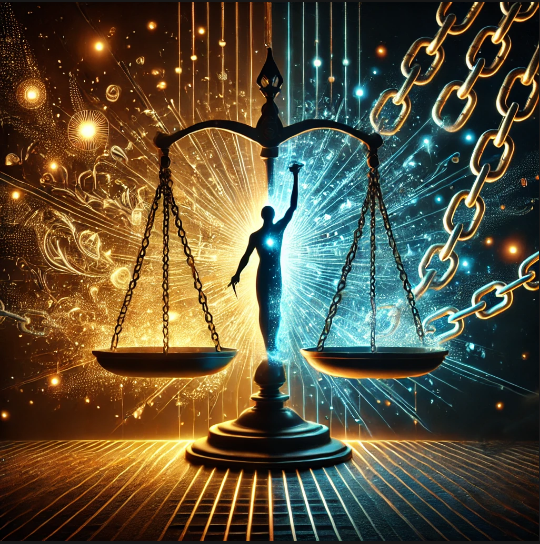Introduction
The Right to Life is one of the most fundamental human rights recognized across democratic constitutions worldwide. In India, this right is enshrined under Article 21 of the Constitution, which states:
“No person shall be deprived of his life or personal liberty except according to the procedure established by law.”
This provision serves as the bedrock of all other rights, ensuring that every individual can live with dignity, security, and freedom. Over the years, the Supreme Court of India has played a pivotal role in expanding the interpretation of Article 21, transforming it into a dynamic provision that protects various aspects of human existence.
This article examines the scope, evolution, judicial interpretations, and challenges associated with the Right to Life in India.
1. Scope and Interpretation of the Right to Life
The Right to Life under Article 21 is not confined to mere physical survival. Instead, it encompasses all aspects that make life meaningful, dignified, and worth living. The Supreme Court has expanded its scope to include the right to live with dignity, health, education, privacy, shelter, a clean environment, and more.
Some key interpretations of the Right to Life include:
- Right to Dignity – Life must be lived with dignity, free from exploitation.
- Right to Livelihood – A person’s means of earning a livelihood is essential for survival.
- Right to a Clean Environment – Protection from pollution and environmental hazards.
- Right to Health and Medical Assistance – Access to healthcare and emergency medical treatment.
- Right to Privacy – Protection from arbitrary state intrusion.
- Right to Shelter – Housing is essential for a dignified existence.
The Supreme Court has consistently expanded the interpretation of Article 21, ensuring its relevance in contemporary society.
2. Judicial Interpretations and Expansions of the Right to Life
The Indian judiciary has been instrumental in broadening the scope of Article 21, making it one of the most significant constitutional provisions. Some landmark judgments that have expanded its meaning are:
A. Right to Live with Dignity
The Supreme Court has held that life under Article 21 does not mean mere animal existence. It must be a life with dignity and freedom.
🔹 Francis Coralie Mullin v. Union Territory of Delhi (1981) – The Court ruled that the right to life includes the right to live with human dignity, necessitating basic necessities like food, clothing, and shelter.
B. Right to Livelihood
The right to livelihood is an extension of the right to life.
🔹 Olga Tellis v. Bombay Municipal Corporation (1985) – The Court recognized that the right to life includes the right to livelihood. Eviction of pavement dwellers without providing alternative accommodation was deemed unconstitutional.
C. Right to Privacy
Privacy has been recognized as a fundamental part of personal liberty.
🔹 Justice K.S. Puttaswamy v. Union of India (2017) – The Supreme Court ruled that privacy is an intrinsic part of the Right to Life, significantly impacting laws on data protection, surveillance, and personal autonomy.
D. Right to Clean Environment
The Court has upheld environmental protection as a part of Article 21.
🔹 M.C. Mehta v. Union of India (1987) – The Court ruled that the right to life includes the right to a pollution-free environment.
🔹 Subhash Kumar v. State of Bihar (1991) – The Court reinforced that pollution affecting water, air, and the environment violates Article 21.
E. Right to Health and Medical Assistance
Healthcare is considered a fundamental right under Article 21.
🔹 Paschim Banga Khet Mazdoor Samity v. State of West Bengal (1996) – The Court held that the government has a duty to provide medical aid, especially in emergencies.
🔹 Parmanand Katara v. Union of India (1989) – The Court ruled that hospitals must provide immediate medical treatment to accident victims without procedural delays.
F. Right to Die with Dignity (Euthanasia)
The right to life has been interpreted to include the right to die with dignity.
🔹 Common Cause v. Union of India (2018) – The Supreme Court legalized passive euthanasia, allowing terminally ill patients to withdraw life support under strict conditions.
3. Right to Life and Social Welfare
A. Right to Education
Education is essential for a meaningful life.
🔹 Unni Krishnan v. State of Andhra Pradesh (1993) – The Court ruled that the right to education is a fundamental right under Article 21.
🔹 This decision led to the 86th Constitutional Amendment (2002), which inserted Article 21A, making free and compulsory education a fundamental right for children aged 6–14 years.
B. Right to Shelter
A dignified life includes the right to adequate housing.
🔹 Chameli Singh v. State of Uttar Pradesh (1996) – The Supreme Court ruled that shelter is a fundamental right under Article 21.
C. Right Against Sexual Harassment
Protection from sexual harassment is essential for the right to life.
🔹 Vishaka v. State of Rajasthan (1997) – The Court laid down guidelines to prevent sexual harassment at the workplace, ensuring women’s safety and dignity.
4. Challenges and Criticism
Despite its wide scope, the Right to Life faces challenges in practical implementation:
- Delayed Justice – Many cases involving violations of Article 21 remain pending in courts for years.
- Lack of Healthcare Access – Despite the right to health, many rural areas lack adequate medical facilities.
- Environmental Degradation – Pollution and deforestation continue to threaten the right to a clean environment.
- Privacy Concerns – Digital surveillance and data breaches pose risks to the right to privacy.
- State Excesses – Police brutality and arbitrary detentions sometimes violate personal liberty.
5. Conclusion
The Right to Life under Article 21 is the most significant constitutional guarantee in India. Through progressive judicial interpretations, it has evolved from a simple protection against unlawful deprivation of life to a comprehensive safeguard encompassing health, education, privacy, environment, shelter, and dignity.
However, despite its expansive scope, challenges persist in its implementation. To uphold the true spirit of Article 21, the government and judiciary must work together to ensure effective enforcement, provide access to justice, and uphold human dignity.
As society evolves, the interpretation of the Right to Life will continue to expand, reflecting the changing needs of individuals in a modern democracy.
2/2




